|
|
|
[Search
Tip: Use " " for better search results ex. "John Q. Doe";
"City of ..."]
|
|
2nd Lt Cecil E. Davis
Pilot |
|
Army Air Corps Pilot
Cecil Davis
1944 |
Cecil E. Davis was born in 1924 at Murray, Utah, and later moved to Oak View, California and then to Bakersfield. When World War II broke out he was seventeen years old and the next year turned eighteen enabling him to be drafted into the army. Cecil didn’t want to serve in the Infantry and wanted to fly. So he enlisted with the Army Air Corps in Los Angeles as a private in 1942, thinking he possibly needed experiences in the Air Corps before entering their aviation cadet program.
Private Davis attended Basic Army Infantry Training at Fresno, California, Flexible Aerial Gunnery School Las Vegas Army Air Field, Nevada, and B-17 Aircraft Mechanics School Amarillo, Texas Army Air field graduating as a gunner/engineer for B-17’s. Later, he qualified for the Army Aviation Cadet Program; transferred to Collage Training Detachment at Carroll College in Waukesha, Wisconsin, received 8 hours of pilot training in a J-3 Cub and from there to the Classification Center at Santa Ana, California. |
|
|
Pilot Cadet Cecil Davis and his PT-22 primary training squadron
|
In the Classification Center at Santa Ana, California, Pilot Cadet Davis went through extensive aircraft related courses; prior to graduation was classified as a fighter pilot. For preparation as a fighter pilot, he began primary pilot training in an open cockpit, Ryan PT-22 at Visalia Army Air Field, California.
Then progressed to basic training at Merced Army Air Field California in BT-13s, (his basic training flight instructor was Lyle ‘Skitch’ Henderson, founder of the New York Pops orchestra, music director for NBC, the original conductor for the orchestras of the ‘The Tonight Show’ and ‘The Today Show’ and Bing Crosby’s radio music director). Afterwards to Williams Army Air Field Chandler, Arizona for advanced training in AT-6s. Photos below: Cecil Davis in BT-13 and Cecil Davis pilot graduation class 44. |
Cecil was to fly the P-38 but prior to graduation the top ten were sent to first pilot B-17 transitioning at Hobbs Army Air Field, New Mexico. While flying on a cross country flight his B-17 developed engine problems and he landed at Columbus, Indiana at one of the Tuskegee Airmen airfields. After B-17s, Cecil transitioned into B-29s and crewed to fly the B-29 at Davis-Monthan Army Air field, Tucson, Arizona.
In the Pacific Theater 2nd Lt. Davis was assigned with the 20th Air Force, 314th bomb wing, 39th Bomb Group, 60th Squadron and with the 29th Bomb Group, 52nd Squadron from the Island of Guam. He flew several sorties in multi-role functions including unidentified missions to Iwo Jima and Okinawa, and a power strike with the entire Wing, In addition, was the first, or one of the first aircraft (B-29) to use Ground Control Approach (GCA) on the Island of Tinian after returning from a mission, and flew a bombing mission against the Island of Rota. Once the Aircraft Commander (AC), Richard ‘Dick” Brinck and he flew a C-45 to Saipan (Left photo below).
|
Meanwhile, on Guam, Lt. Davis wrote a letter to one of his younger brothers who was on a Destroyer in the Navy. His brother soon phoned. He had been wounded and was on the same Island. Cecil borrowed the Commander’s jeep and went to see his brother at the Navy base (photo above right). All four Davis brothers were in military service. The two younger brothers were in the Navy on Destroyers, one in the Pacific, one in the Mediterranean. Cecil and his older brother were in the Army Air Corps. |
When the war ended Cecil was transferred to the 313th bomb wing, 9th bomb group, 99th squadron on Tinian (Photos above of Cecil Davis on Tinian Island) to help prepare the wing to move to the Philippines, in addition, to checking out pilots in B-17. Before going back home he was briefly stationed at Saipan.
Returning to USA in 1946 Lt. Davis joined the Reserve to go into business with AC, Dick Brinck, but both were recalled for the Korean War.
During the Korean conflict Cecil was assigned to Strategic Air Command’s 98th Bomb Wing. The 98th Bomb Wing began as a B-24 Squadron in World War II and was reactivated in the 15th Air Force as a B-29 squadron in 1947.
Within the 98th was the 345th Bomb Squadron and 1st Lt. Cecil Davis was assigned to the 345th Squadron in 1951 to fly combat in the Korean War. He was based at Yokota Air Base, Japan, and as Lead Crew flew B-29 raids against North Korea.
Some missions at that time were classified but included flying over or near the Soviet Union. Cecil’s aircraft, number 2106, was named “Ready Willin Wanton”. His name was painted below the cockpit window as ‘Dave’ Davis, instead of Cecil. Most friends called him ‘Dave’. Photos below left to right: the B-29 2106, and part of the 345th Bomb Squadron Combat Crew “Ready Willin Wanton” getting ready for a night raid in 1952 at Yokota. Cecil is on the left of the crew. |
Military veterans know combat, training and flying in general could be dangerous. Cecil lost friends, former crewmembers and commanders killed in action (KIA), and in accidents. Operations Officer Major Smith was KIA on a night raid against North Korea. Major Smith is pictured (left photo below) third from left (hand on ear). 1st Lt. Fink, second from left (with hands behind back), was reported in the Stars and Stripes killed in a B-25 accident. Cecil Davis is second from right. All the officers are in the Combat Operations Room, Yokota Air Base, Japan discussing a night raid on North Korea. After a particular night raid, Cecil Davis was privileged to be awarded the Distinguished Flying Cross (DFC) for extraordinary achievement in combat, and he flew with one other combat crew. (Right photo: Cecil Davis receiving DFC). |
After a tour of 31 combat missions in the Korean War (34 on his form 5), Cecil returned to USA and transferred to the Air Defense Command.
When Davis was transferred to the Air Defense Command he was promoted to Captain and attended a Fighter Pilot refresher course at Kinston, North Carolina then assigned to 31st Air Division, in Minneapolis, Minnesota. In addition, Cecil attended Aircraft Controllers School at Tyndall Air Force Base Florida and was assigned to Osceola, Wisconsin, Aircraft Control and Warning Squadron as an Aircraft Controller. Soon after was transferred to Headquarters 31st Air Division, Minnesota and attended Squadron Officer’s Command and Staff School in Maxwell, Alabama and Jet qualification course at Randolph, AFB San Antonio Texas.
After returning to Headquarters 31st Air Division Cecil served as a Senior Controller, member Air Inspector’s Team, UFO Study and Reporting Team, Squadron Commander and special Assistant to Commanding General 31st Air Division. During this time he also flew Liaison officers often, particularly his commanding general, but not always in Liaison classified aircraft. In addition, Captain Davis flew cross country flights and the T-33 was a favorite for this. Photo below of Cecil with parachute and as Air Surveillance Officer in the Combat Operations Blockhouse. |
Then, Captain Davis was assigned to the USAF 916th Aircraft Control and Warning Squadron, Beausejour Air Station, Manitoba, Canada. In Canada, he was in Operations and flew with the Royal Canadian Air Force (RCAF) including helicopter, aircraft on floats and a mission near the Article Circle.
After a few of years Cecil was transferred to Tactical Air Command (photo below at Orlando AFB). |
In Tactical Air Command Captain Davis was first stationed at Seymour Johnson and Shaw AFB serving with the 9th Air Force 4411th and 4415th Combat Crew’s flying the reconnaissance RB-66. Later, Cecil transferred to Tactical (nuclear) Missile Wing, Florida. At the 4504th Missile Training Wing he was Information Officer, on the Command Staff overseeing missile launches from Cape Canaveral, and supervised the education and Public Relations of tactical missiles to the public. Photo below L to R: Cecil Davis with Airman Monte Blue at Cape Canaveral. Note: writing on missile nose reads 4504th MSL TRG WG (TAC). And, Matador missile on parade with Wing at Orlando AFB |
Cecil resigned his regular commission in 1960 at Orlando AFB to fly commercial but continued with the Active Air Force Reserve and was promoted to Major.
Major Davis worked as Information Officer, Headquarters Continental Air Command then as Air Force Operations Officer, Civil Air Patrol, Florida. He retired from the Active Air Force Reserve in 1967 as a major.
Major Davis ended his military career as a senior pilot with over 2600 hours (928 combat hours). Cecil flew a variety of aircraft, single, twin and multi-engine prop, single and twin jet, and helicopter in diverse places around the world off of land, water, ice and snow (also obtaining Royal Canadian Air Force Pilot Wings with the King’s Crown).
US Military Aircraft Flown: J-3, PT-22, BT-13A/B, AT-6/D/G, AT-11, B-17F/G, B-25J/N, B-29, B-50, C-45A/F/G/H, C-47/A, C-119, C-123/B, H-19/B/SH-19 (Search & Rescue), L-20A, L-27A, RB-66B, T-7, T-33/A.
Royal Canadian Air Force aircraft flown: Dehavilland CSR-123 or Dehavilland Otter on floats (Search & Rescue), Dakota CC-129 or Douglas SC-47 (Search & Rescue), Sikorsky S-55 Helicopter or Sikorsky H-19A (Search & Rescue), Canadair Silverstar CT-133 or Lockheed T-33 with Rolls Royce engine (Jet Trainer/Fighter), Expeditor CT-128 or Beech C-45, B-25 Mitchell.
Furthermore, Cecil considered himself blessed to be sent to many USAF occupational courses and training and obtained several badges. U.S. Air Force Senior Pilot Wings, U.S. Air Force Senior Weapons Controller Badge, U.S. Air Force Missileman Badge, U.S. Air Force Information Management Badge, U.S. Army Air Corps Gunner Wings, U.S. Army Air Corps Air Crew Wings, and U.S. Army Marksman Badge (Machine Gun / Pistol). However, when Cecil was on duty he only wore his US wings or US wings and ribbons. After retiring he wore his foreign wings and other badges along with senior pilot wings to military functions and formal military and diplomatic functions. They are now in his display case at home. (Cecil has documentation on aircraft, badges, and 20 some decorations and awards).
Awards and Decorations: Distinguished Flying Cross, Air Medal with Oak Leaf Cluster, U.S. Presidential Unit Citation*, U.S. Army Good Conduct Medal, American Campaign Medal**, Asiatic Pacific Campaign Medal with two Battle Stars, Victory Medal World War II, World War II Occupation Medal, National Defense Service Medal with Battle Star, Korean Service Medal with two Battle Stars***, Korean Defense Service Medal, Air Force Longevity Service Ribbon with four Oak Leafs, Armed Forces Reserve Medal with Bronze Hour Glass, Air Force Small Arms Expert Ribbon, Republic Of Korea Presidential Unit Citation, United Nations Korean Service Medal, Republic Of Korea (ROK) Korean War Service Medal, and Ambassador for Peace Medal (ROK). * Some documents awarded an Oak Leaf cluster, **some a Battle Star, ***some five Battle Stars, and the Air Force Commendation Medal (on retirement).
During Cecil Davis’ commercial flying career he flew another 3100 plus hours and twenty-seven assortment of aircraft (including as an instructor and experimental aircraft). Cecil flew in North America, South America, England, and Africa (seventeen countries). He flew pleasure, vintage, commercial, and racer aircraft with single, twin engine prop, helicopter, and four engine jet. One of the experimental aircraft Cecil tested was a Cessna 185 with a reversible prop for short-field operations, testing an emergency fuel system, and evaluation of hovercraft operations at a Royal Navy Station in Southern England. Also, he obtained an A & P mechanic license, and had the occasion to fly a fully restored Ryan PT-22 some 40 years after he had first flown it. Cecil retired from commercial aviation in 1986, as a Pilot, Captain, Instructor, and went into consulting. A Cessna 185 was the last aircraft he flew. The Ryan PT-22 and Cessna 185 are pictured below.
|
Years later the South Koreans gave Major Davis the honor of Korean Command Pilot Wings which he wore to Korean events. And, later after the wings presentation he was issued the “Ambassador for Peace” medal [wore around the neck] and certificate from the South Korean Ambassador. (Photos below of Cecil Davis with South Korean Defense and State Officials). |
In 2007 Major Davis attended a celebration as a guest of honor for USAF’s 60th Anniversary party where his personal military photo album generated a lot of interest. His wife, Colleen, attended with him (left photo below of Cecil Davis with wife Colleen). |
One of the last military balls Major Davis attended along with his wife Colleen, and youngest son, Don (right photo above with Cecil Davis, Colleen and Don). His oldest son (David) could not attend. Since the Korean and USAF events Cecil has slowly reduced attending military functions. Now, he spends time reading, studying and writing. |
|
Major Cecil E. Davis took his Final Flight on 18 December 2020 |
1st
Replacement Crew 6 Main Page
60th Squadron Crew Index
|
|



![dfc.gif [The Distingushed Flying Cross]](../../../images/medals/dfc.gif)
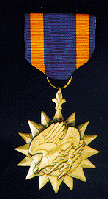
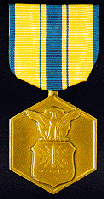
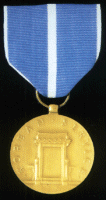
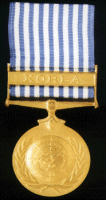
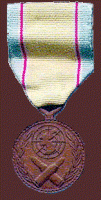




![dfc.gif [The Distingushed Flying Cross]](../../../images/medals/dfc.gif)





